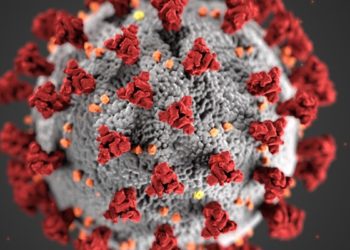Participation in sports and exercise linked to lower opioid use
1. Adolescents who reported engaging in sports, athletics, or exercise at least once a week within the past year were less likely to have ever used opioids for nonmedical reasons.
2. The odds of starting to use nonmedical prescription opioids before or concurrently with heroin were comparable or less for those who reported participating in sports.
Study Rundown: Opioids, including hydrocodone (e.g., Vicodin), codeine, and morphine, are effective pain-relievers; however, they also carry a risk of dependency. Adolescent athletes, particularly those involved in high-injury sports such as football and wrestling, may be prescribed such medications more commonly than their non-athletic peers to treat sports-related injuries. In some cases, such exposure could lead to addiction and nonmedical prescription opioid use (NPOU) with serious consequences. To investigate whether sports participation in adolescence was associated with an increased risk for NPOU (and, in particular, heroin use), authors analyzed 18 years of cross-sectional data on 8th and 10th grade participants in the Monitoring the Future (MTF) study. Contrary to what may have been expected, results suggested that adolescents who engaged in sports or exercise had lower odds of both NPOU and heroin use. Further, among those who reported ever taking heroin, results argued against drug use beginning with sports-related injury and progressing to NPOU and heroin use. A significant limitation of this study was its broad consideration of sports and exercise, as this design could fail to identify a subpopulation of high-risk adolescent athletes. Type of athletic involvement, ever obtaining a sports-related injury, and other possible “initiators” such as opioid prescription for wisdom teeth removal could all be confounders. Thus, while the study’s findings are consistent with a benefit from sports/exercise participation for opioid avoidance, judicious prescribing practice is still of critical importance.
Click to read the study, published today in Pediatrics
Relevant Reading: Painfully obvious: A longitudinal examination of medical use and misuse of opioid medication among adolescent sports participants
Study Author, Philip Veliz, PhD talks to 2 Minute Medicine: Institute for Research on Women & Gender, University of Michigan, Ann Arbor, Michigan.
“While the study found a decrease in opioid and heroin use among youth athletes over the past 17 years, physicians need to be aware that athletes may be at an increased risk to misuse these medications due to injury and other factors related to participation in sports.”
In-Depth [cross-sectional study]: Respondents included 191 682 8th and 10th graders (weighted n = 191 660) who completed MTF classroom questionnaires on sports/exercise participation and NPOU and heroin use. Analysis was performed on cross-sectional data from 1997 to 2014 and was controlled for potential confounders such as sex, race, suspension from school, other drug use, and U.S. geographical region. In addition to questions on lifetime opioid use, participants were asked to identify the grade in which they first took any of the drugs. This information was used to assess the relative timing of NPOU and heroin initiation. Baseline characteristics suggested that just over half of the 8th and 10th graders participated in sports and exercise almost every day. The percentage of respondents indicating any lifetime NPOU or heroin use decreased during the study period (10.1% and 2.3% in 1997-1999 to 5.0% and 1.0% in 2012-2014, respectively). Adolescents participating in sports at most 1 time per week or almost every day had decreased odds of lifetime NPOU and heroin use (p < 0.05). Living in the United States South was associated with an increased risk of lifetime heroin use (p < 0.001). The odds that an adolescent participating in sports or exercise would engage in NPOU in the same grade as starting heroin or prior to beginning heroin were comparable to or less than those of non-athletes, with greater sports participation (i.e., almost every day) decreasing the odds of this sequential progression (p < 0.01).
Image: PD
©2016 2 Minute Medicine, Inc. All rights reserved. No works may be reproduced without expressed written consent from 2 Minute Medicine, Inc. Inquire about licensing here. No article should be construed as medical advice and is not intended as such by the authors or by 2 Minute Medicine, Inc.







